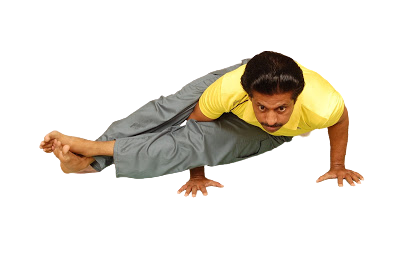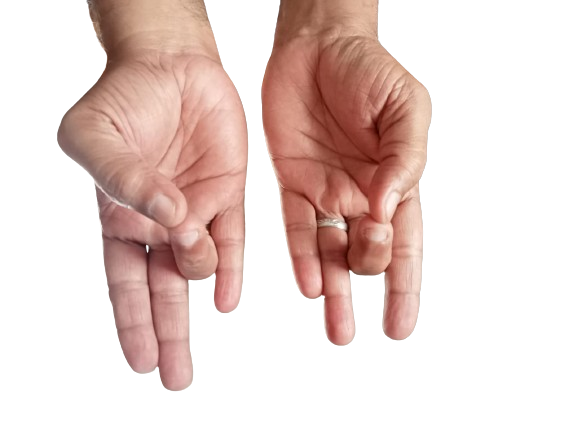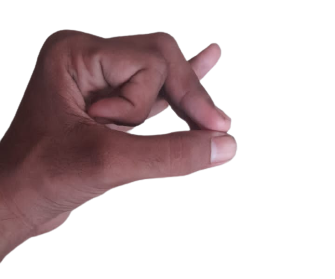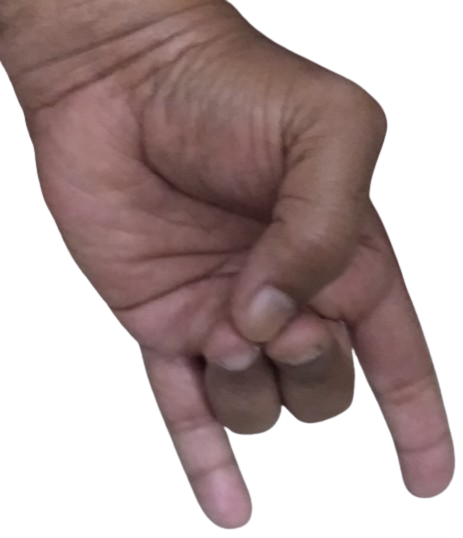In Sanskrit, 'ashta' means 'eight' and 'vakkiram' means 'to twist'. The pose is called Ashtavakrasana in Sanskrit. It is named after the sage Ashtavakkirar.
Eight Angle Pose is one of the best arm balancing yoga poses. The pose energizes the whole body. Eight Angle Pose stimulates manipura, which attracts universal energy. Regular practice of the pose improves balance.
Other Benefits of Eight Angle Pose
- Stretches the whole body
- Stretches the spine.
- Strengthens the shoulders, hands and wrists
- It strengthens back muscles.
- Stimulates functions of abdominal organs
- Promotes blood circulation
- Improves focus
- Promotes self-confidence
Instructions
- Assume Mountain Pose.
- Place the feet few inches away from each other.
- Exhale as you bend forward and place your palms by the sides of your feet. The pose you now assume is Standing Forward Bend.
- Bend your legs slightly and slide your right hand between your legs and place the right palm on the floor behind your right leg.
- Place the right knee on the right shoulder.
- Stretch your left leg towards your right and curl the ankles.
- Slightly lean towards your left so the left hand holds more of the body weight and lift your feet off the floor.
- With exhalation, bend your elbows.
- Lean your torso forward till your torso is parallel to the floor.
- Stretch your legs towards your right so your right upper arm is positioned between your thighs.
- Hold the pose for one minute.
- Release the pose and repeat the same on the other side.
Note
Those with severe injury in shoulders, wrists, back and hips should refrain from practicing Eight Angle Pose.
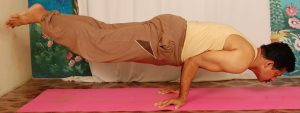
Yoga Pose for Day 74 - Peacock Pose (Mayurasana)
Peacock Pose is one of the challenging arm balancing poses just as the Eight Angle Pose we saw yesterday. The pose is called Mayurasana in Sanskrit. 'Mayura' means 'peacock'. The form apart, the pose gets its name
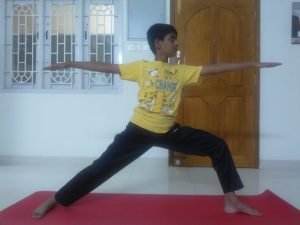
Yoga Pose for Day 72 - Warrior Pose 2 (Virabhadrasana 2)
Yesterday's pose was about Warrior Pose 1. Today, we will cover the benefits and how-to-do of Warrior Pose 2. As mentioned yesterday, 'vira' in Sanskrt means 'warrior' and 'bhadra' means 'auspicious' and 'companion'...
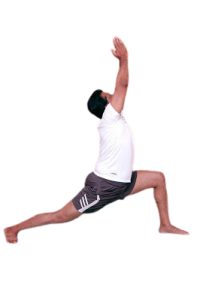
Yoga Pose for Day 71 - Warrior Pose 1 (Virabhadrasana 1)
There are three types of Warrior Pose. Today's asana will be Warrior Pose 1. The pose is called Virabhadrasana in Sanskrit. 'Vira' in Sanskrit means 'warrior', and 'bhadra' means 'auspicious' and 'companion'. That is a warrior who is also a a supportive companion.


